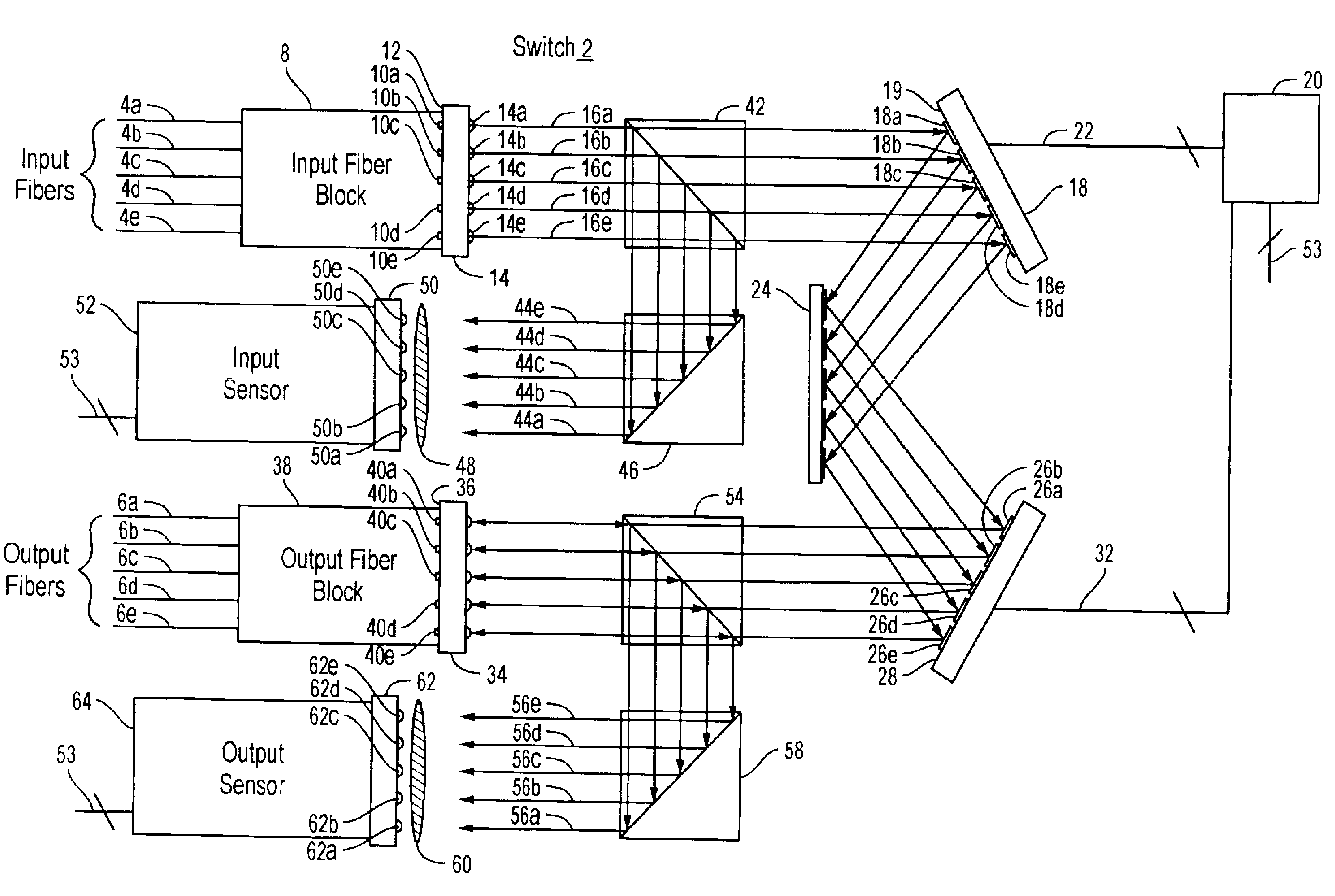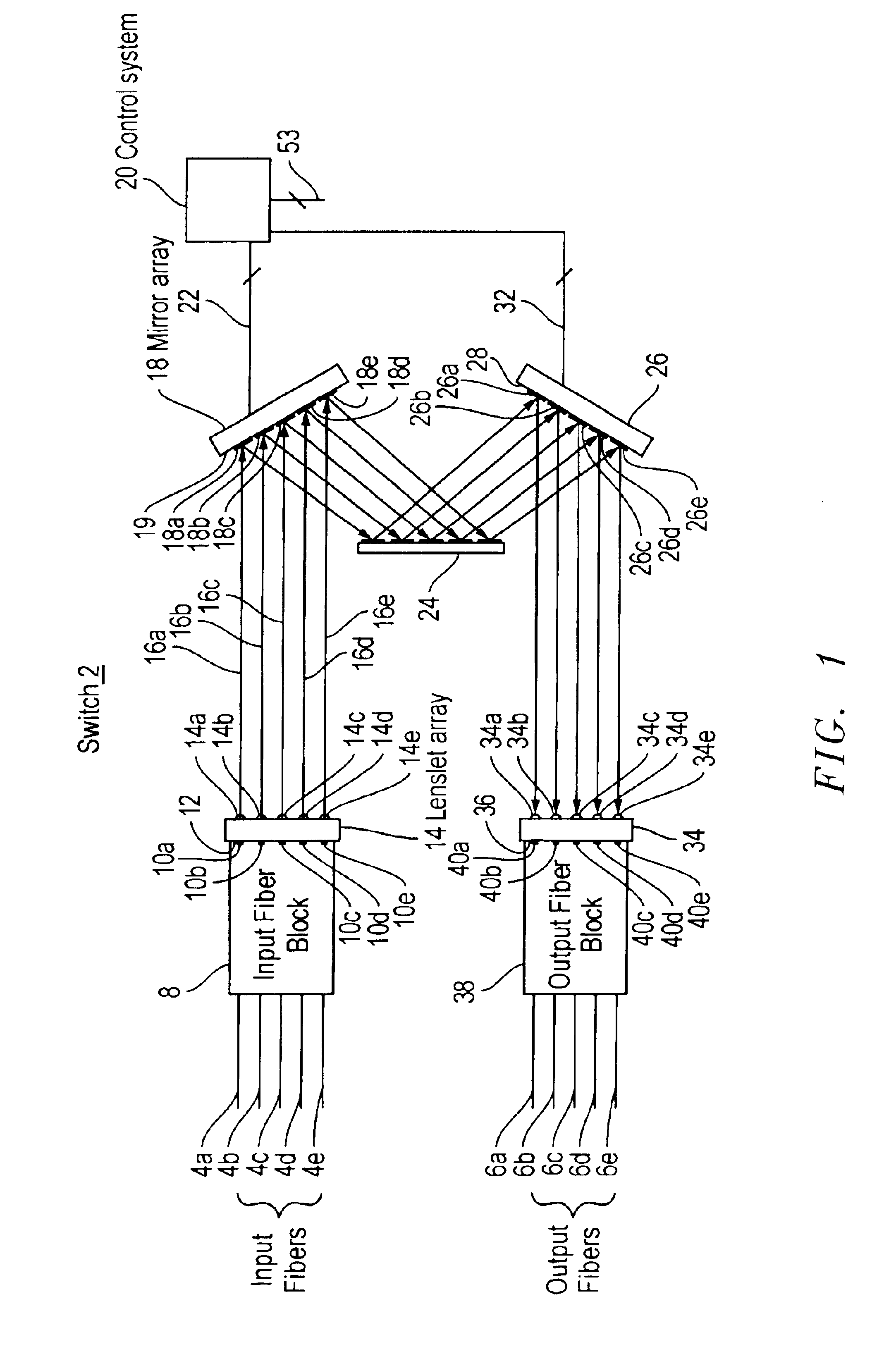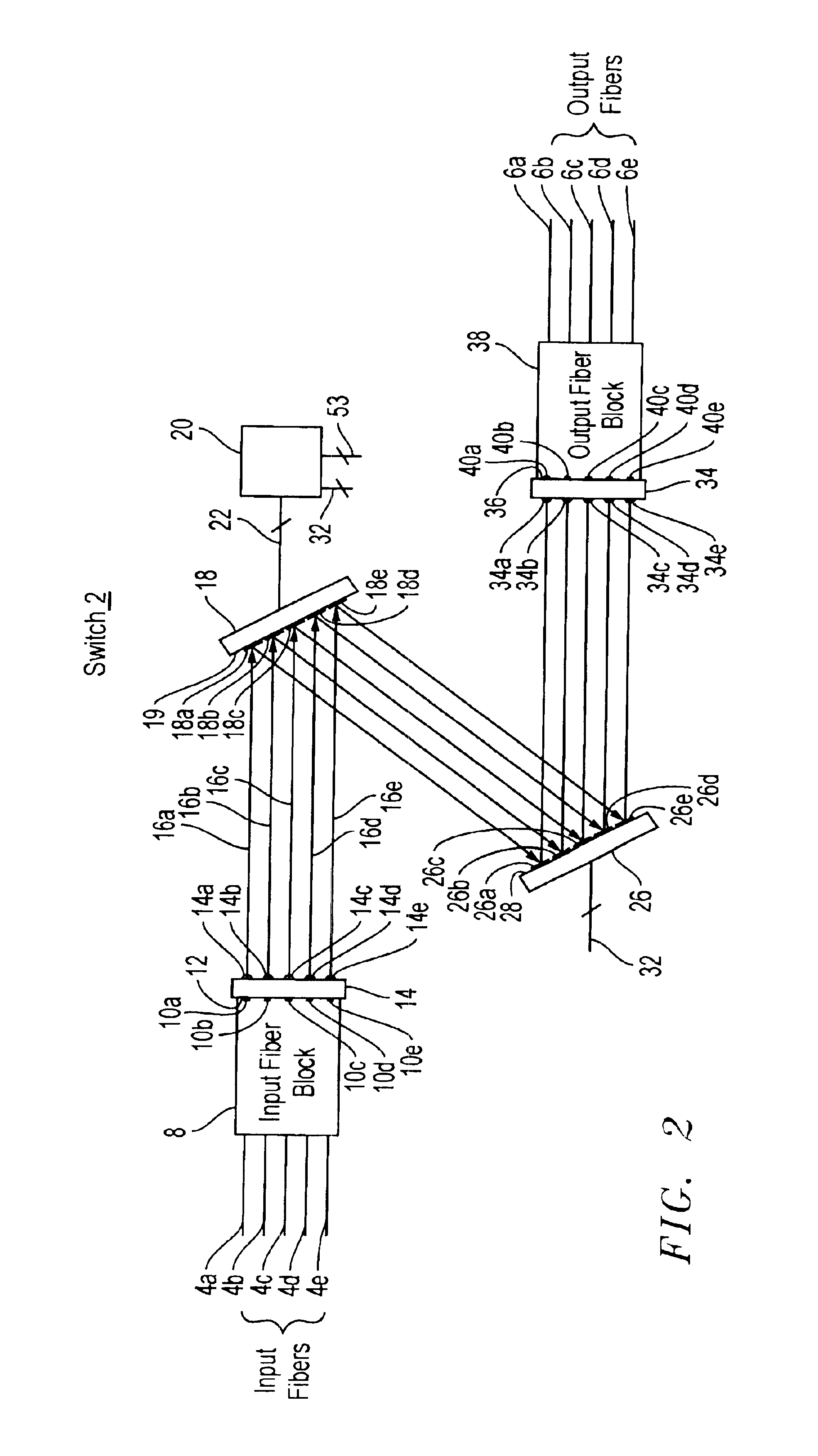Optical system for calibration and control of an optical fiber switch
a technology of optical fiber switch and optical system, applied in the field of optical system calibration and control of optical fiber switch, can solve the problems of significant bottlenecks in the optical switch that routes optical signals, unmanageable complex devices for large n, time delay and cost, etc., and achieve the effect of reducing the loss of optical switch insertion and high resolution control
- Summary
- Abstract
- Description
- Claims
- Application Information
AI Technical Summary
Benefits of technology
Problems solved by technology
Method used
Image
Examples
Embodiment Construction
[0036]An optical fiber cross-connect switch in accordance with embodiments of the present invention routes light input through any one of N input ports to any one of P output ports. In a typical optical path through a switch, light entering the switch through an input port is incident on a corresponding first micro-mechanical mirror in a first two dimensional array of micro-mechanical mirrors. The first micro-mechanical mirror, which can be oriented in a range of arbitrary directions (dθ,dφ), is tilted to direct the light to a second micro-mechanical mirror in a second two dimensional array of micro-mechanical mirrors. The second micro-mechanical mirror, which can also be oriented in a range of arbitrary directions (dθ,dφ), is tilted to direct the light to a corresponding output port and hence out of the switch.
[0037]The light may be switched from the output port to which it is initially directed to another output port by reorienting the first micro-mechanical mirror to direct the l...
PUM
 Login to View More
Login to View More Abstract
Description
Claims
Application Information
 Login to View More
Login to View More - R&D
- Intellectual Property
- Life Sciences
- Materials
- Tech Scout
- Unparalleled Data Quality
- Higher Quality Content
- 60% Fewer Hallucinations
Browse by: Latest US Patents, China's latest patents, Technical Efficacy Thesaurus, Application Domain, Technology Topic, Popular Technical Reports.
© 2025 PatSnap. All rights reserved.Legal|Privacy policy|Modern Slavery Act Transparency Statement|Sitemap|About US| Contact US: help@patsnap.com



